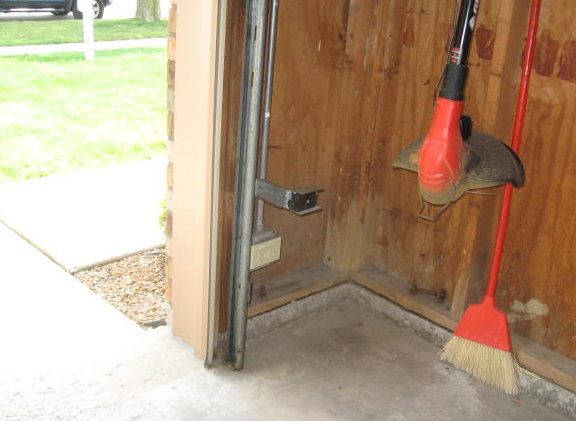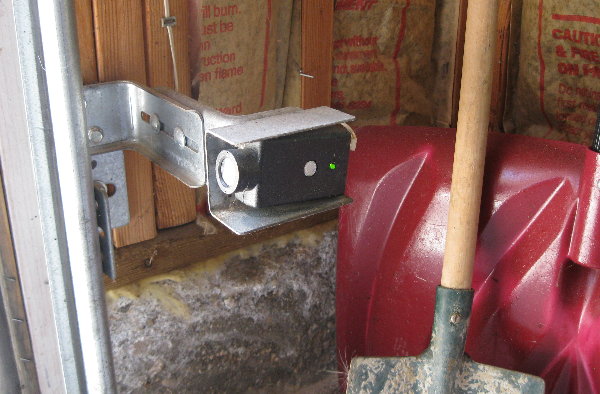|

|
|
|
|
|
|
|
|
Flaky Garage Door Opener |
 |
On a hot summer day, I had just finished
mowing my front lawn when my neighbor walked over to me and asked “you’re an engineer
aren’t you?” I said that I was. He proceeded to ask me if I might do him a big
favor and have a look at his garage door opener. I gave him a puzzled look but since
he was just across the street, I wiped my sweaty forehead and followed him toward his
house. As we were walking to his place, he told me that for the last several days he
was not able to close his garage door until later in the day, once it had opened. |
| He
would come home about the same time each day, open the door with the RF remote control in
his car and pull in to the garage. But once opened, he could not get it closed.
This problem had started a few days before and occurred every day since. He would
get home at about 5:30 after work but could not close the door until around 6:30. It
was driving him nuts. He could not understand why this problem would somehow fix
itself about the same time each day. |
| Since
every garage door in my subdivision, including mine, had the same door opening mechanism,
I was quite familiar with the machine. These single large door models used a belt
drive to move the door, using a geared motor, powered by 120vac. An optical beam
hazard detection system was included in the opener, to prevent the door from coming down
onto an object. The object detector was a modulated light source on one side of the
door opening and light detector assembly, on the other side. Both modules were positioned
just inside the door, about a foot off the ground. I suspected that this detector
was the root cause of his problems. But why did it only fail in the afternoon?
|
 |
I asked my neighbor a few questions
and then I asked him to open his door for me. In about a minute he had opened
the door and came outside with me, armed with his car’s RF remote. He showed
me that at this time of day, he could open and close the door without any problems.
At the time of this demonstration, it was about 1:00 in the afternoon. |
|
So, in review, he gets home at 5:30
and can’t get the door to close but by 6:30 everything is fine again. What is
going on this time of the day? Sure, other people are also coming home about
that same time, so it might be possible that their opener is somehow interfering
with his unit. But, he says that he has tried the opener several times during
this period and gets the same result. The door would not close in any time
during that hour long period from 5:30 to 6:30. Could a local ham radio
operator swamp the opener’s RF receiver? Not likely. |
| Object Detector Light Receive |
|
|
|
| There
were no hams in our immediate area. He added one more clue to this puzzle when he
said that even the direct hard wired connection to the opener, using the pushbutton by the
door, leading into the garage, would not allow him to close the door. It flashed the
opener’s light, like there was an obstruction in the pathway. A light went off in my
head. Bingo! In a flash, I figured the whole thing out. I told my neighbor
that I would come back with some hardware to fix his problem and we would test my theory
when the magic 5:30 time came around again. |
| I
asked him for a ruler and I made a few quick measurements of the hazard detection light
receiver module. I went back to my basement lab and grabbed a two and a half inch
long piece of one inch PVC pipe, a rubber band and some RTV caulk. In a few minutes, I was
back at my neighbor’s house. I put some RTV rubber around the outside of the round
lens piece sticking out from the receiver housing. I slid the piece of PVC pipe over
the lens and then put a rubber band around it, to hold it in place, while the RTV cured.
|
| At
around 5:30, I went back over to my neighbor’s house and he was waiting for me with his RF
remote in hand. We tried it several times and the door worked perfectly. He
looked over at me and said “OK genius, how did a piece of pipe fix the problem?” I
described how the optical object detection system worked. I showed him with my hand
that whenever the established light beam was broken, the opener would not try to close the
door. If the door was closing, it would stop, then flash the opener’s light, to
signal that an obstruction was detected. At this time of the year, at 5:30, the sun
rays come from nearly due west. His receiver faced in that direction. His
house faced nearly due north, so the sun’s rays were nearly directly in line with light
beam receiver. The bright sunlight blinded the receiver unit. It could not detect
the modulated light from the transmitter side. Once opened, the door would not
close, since it thought there was an obstruction. At 6:30, an hour later, the sun
rays were closer to the horizon and were cut off by homes down the street. At that time,
his light receiver was again in the shade. It should be noted that if the transmitter and
receiver sections were reversed, there would be a good possibility that my neighbor would
have the same kind of problem but it would occur in the morning. The short piece of PVC
pipe provided just enough shading from the sun, so the light no longer struck the detector
directly. Once the pipe was installed, my neighbor never had any more problems.
|
 |
 |
| Object Light Detector Receiver |
PVC Pipe Over Light
Receiver |
|
|
|
|
|
|